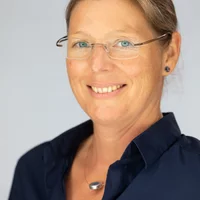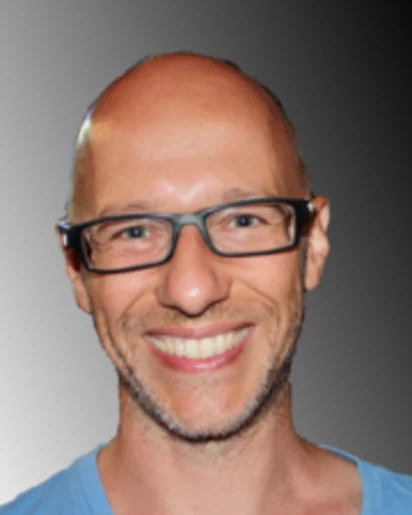Biography
I began my scientific career in 2001 shortly after receiving a degree in physics at the university of Florence. I took a fellowship of the Italian National Research Council for the development of laser remote sensing techniques, where I started acquiring experience in the field of optical spectroscopy, laser sources and light detectors. The next year I started working in the F-LIDAR (Fluorescence LIDAR) group at the CNR-Applied Research Institute “Nello Carrara”. There I was a collaborator in the design and development of several LIDAR (Light Detection And Ranging) systems for the remote sensing of the sea and the atmosphere.
In February 2005 I obtained a PhD in Methods and Technologies for Environmental Monitoring with a thesis on the design and development of the optical system of a LIDAR sensor for aquatic environment. This gave me the opportunity to gain experience with telescope systems, photonic devices and spectroscopy.
In 2005 I joined the Arcetri Astrophysical Observatory. I was in charge of the development, assembly and testing of the optics and opto-mechanics of Giano, a near infrared spectrograph for the Italian National Telescope Galileo.
In 2008 I joined the Center for X-Ray Optics (CXRO) at Lawrence Berkeley National Laboratory (LBNL) as a Physicist Post-Doc Fellow. I have been involved in the Sematech Berkeley Actinic Inspection Tool (AIT) project.
In 2010 I was hired as a project scientist at CXRO. I worked as a beamline scientist at BL11.3.2 at the Advanced Light Source and I began my work on the SHARP project. SHARP is an EUV microscope dedicated to photolithographic mask inspection funded by SEMATECH, a consortium of firms working on integrated devices.
In 2015, I joined imec as a R&D lithography engineer in the Advanced Patterning group and I worked on sub-resolution assist features for Node 5 and Node 7 structures on EUV photomasks. My job included simulations and experimental validation of test structures.
In 2016 I moved to Switzerland and joined the Paul Scherrer Institut as a beamline scientist at the Swiss Light Source (SLS). Here I am working on the development of synchrotron-based instrumentation and techniques for EUV interference lithography and soft X-Ray metrology based on coherent diffraction imaging.
Institutional Responsibilities
I am the beamline scientist for the XIL-II beamline and I coordinate and supervise the experiments carried out at the metrology branch of the beamline.
Scientific Research
My main research focus is the development of EUV instrumentation and technologies for semiconductor devices metrology. In particular, my activity revolves around the development of the XIL-II metrology end station, a lensless microscope dedicated to the inspection and characterization of EUV photomasks.
I also work on the characterization of advanced materials for semiconductor manufacturing using EUV interference lithography.
My main research interests are nano-imaging and interferometry techniques in the X-Ray spectrum.
Selected Publications
For an extensive overview we kindly refer you to our publication repository DORA.
Quantitative characterization of absorber and phase defects on EUV reticles using coherent diffraction imaging. Mochi, I., Fernandez, S., Nebling, R., Locans, U., Rajeev, R., Dejkameh, A., Kazazis D. ,Tseng, L-T., Danylyuk S, Juschkin L., Ekinci, Y. (2020). Journal of Micro/Nanolithography, MEMS, and MOEMS, 19(1), 014002 (11 pp.).
Background: Reliable photomask metrology is required to reduce the risk of yield loss in the semiconductor manufacturing process as well as for the research on absorber materials. Actinic pattern inspection (API) of EUV reticles is a challenging problem to tackle with a conventional approach. For this reason, we developed RESCAN, an API platform based on coherent diffraction imaging. Aim: We want to verify the sensitivity of our platform to absorber and phase defects. Approach: We designed and manufactured two EUV mask samples with absorber and phase defects, and we inspected them with RESCAN in die-to-database mode. Results: We reconstructed an image of an array of programmed absorber defects, and we created a defect map of our sample. We inspected two programmed phase defect samples with buried structures of 3.5 and 7.8 nm height.Conclusions: We verified that RESCAN, in its current configuration, can detect absorber defects in random patterns and buried (phase) defects down to 50 × 50 nm2.
Experimental evaluation of the impact of carbon nanotube EUV pellicles on reticle imaging. Mochi, I., Timmermans, M. Y., Gallagher, E. E., Mariano, M., Pollentier, I., Rajendran, R., Helfenstein, P., Fernandez, S., Kazazis, D., Ekinci, Y. (2019). Journal of Micro/Nanolithography, MEMS, and MOEMS, 18(1), 014002 (7 pp.).
Background: The purpose of EUV pellicles is to protect the surface of EUV lithography masks from particle contamination. It is important to ensure that the optical characteristics of the pellicle membrane do not critically affect the reticle image quality. Aim: We want to verify the possibility to integrate pellicle inspection and characterization capabilities in reflective-mode EUV mask scanning microscope (RESCAN), our actinic mask inspection platform based on coherent diffraction imaging. Approach: We studied the impact of a few selected EUV pellicle prototypes on the quality and the contrast of the reticle image obtained with RESCAN. Results: We measured the scattering distribution of the pellicles, and we correlated it with the mask image contrast and fidelity. We also detected the presence of a 6.5-μm-diameter fiber on the pellicle surface. Conclusions: We demonstrated that RESCAN is suitable for through-pellicle actinic mask inspection and can be also used to characterize and monitor the pellicle quality.
Lensless EUV Lithography and Imaging, Iacopo Mochi and Yasin Ekinci (2019). Synchrotron Radiation News 32:4, 22-27.


